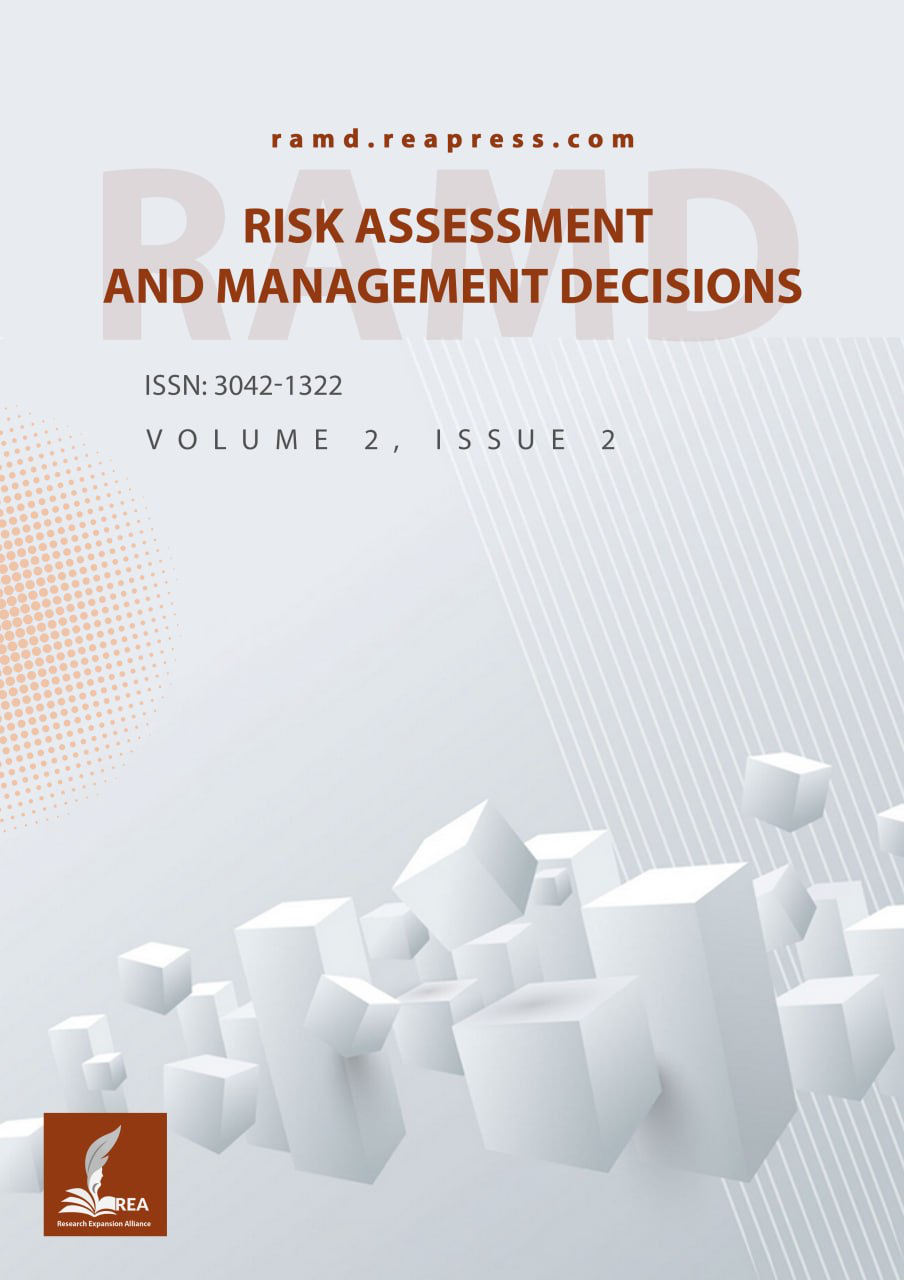Prioritizing Climate Change Contributing Factors via the VIKOR Method under Q-Rung Orthopair Fuzzy Environment
Abstract
Climate change, characterized by long-term shifts in temperature and weather patterns, is predominantly driven by human activities. Although numerous factors, such as carbon dioxide concentration, changes in the Earth’s orbit, ocean currents, greenhouse gas emissions, and variations in solar energy reflection or absorption, are recognized as contributors, the degree of their individual impacts remains unclear and uncertain. This study aims to prioritize the contributing factors to climate change by employing the VlseKriterijumska Optimizacija I Kompromisno Resenje (VIKOR) method integrated with Q-Rung Orthopair Fuzzy Sets (Q-ROFS), a robust approach to handle vagueness and uncertainty in expert assessments. Five domain experts provided linguistic evaluations regarding the importance of each contributing factor. The aggregated linguistic data were analysed using the Q-ROFS-VIKOR model, revealing that two primary factors, identified as R1 and R2, are the most significant contributors to climate change. Interestingly, the factor 'carbon dioxide concentration' was ranked lowest, suggesting a relatively negative impact compared to other factors considered. The findings provide a clearer perspective on the relative significance of various climate change factors, offering valuable insights for policymakers and researchers in designing effective mitigation strategies.
Keywords:
Decision making, Climate change, Q-rung orthopair fuzzy sets, VlseKriterijumska optimizacija i kompromisno resenje methodReferences
- [1] Intergovernmental Panel on Climate Change (IPCC). (2022). Climate change 2022: Impacts, adaptation and vulnerability. https://www.ipcc.ch/report/ar6/wg2/
- [2] United Nations Environment Programme (UNEP). (2022). Global environment outlook for cities. https://B2n.ir/bd8424
- [3] NASA. (2023). Global climate change: Vital signs of the planet. https://climate.nasa.gov/
- [4] Masson-Delmotte, V., Zhai, P., Pirani, A., Connors, S. L., Péan, C., Berger, S., ... & Zhou, B. (2021). Climate change 2021: The physical science basis. Contribution of working group i to the sixth assessment report of the intergovernmental panel on climate change, 2(1), 2391. https://www.ipcc.ch/report/ar6/wg1/downloads/report/IPCC_AR6_WGI_FrontMatter.pdf
- [5] Hausfather, Z., & Peters, G. P. (2020). Emissions-the ‘business as usual’story is misleading. Nature, 577(7792), 618–620. https://www.nature.com/articles/d41586-020-00177-3
- [6] Sherwood, S. C., Webb, M. J., Annan, J. D., Armour, K. C., Forster, P. M., Hargreaves, J. C., ... & Zelinka, M. D. (2020). An assessment of Earth’s climate sensitivity using multiple lines of evidence. Reviews of geophysics, 58(4), e2019RG000678. https://doi.org/10.1029/2019RG000678
- [7] Sivakumar, M. V. K. (2005). Impacts of natural disasters in agriculture, rangeland and forestry: An overview. In Natural disasters and extreme events in agriculture: Impacts and mitigation (pp. 1–22). Springer. https://doi.org/10.1007/3-540-28307-2_1
- [8] Janzen, H. H. (2004). Carbon cycling in earth systems—a soil science perspective. Agriculture, ecosystems & environment, 104(3), 399–417. https://doi.org/10.1016/j.agee.2004.01.040
- [9] Smith, P., Martino, D., Cai, Z., Gwary, D., Janzen, H., Kumar, P., ... & Smith, J. (2008). Greenhouse gas mitigation in agriculture. Philosophical transactions of the royal society b: Biological sciences, 363(1492), 789–813. https://doi.org/10.1098/rstb.2007.2184
- [10] Amien, I., Rejekiningrum, P., Pramudia, A., & Susanti, E. (1996). Effects of interannual climate variability and climate change on rice yield in Java, Indonesia. Water, air, and soil pollution, 92(1), 29–39. https://doi.org/10.1007/BF00175550
- [11] World Bank. (2021). Climate-smart development: Policies and programs for advancing economic growth and sustainable development. https://openknowledge.worldbank.org/entities/publication/ee8a5cd7-ed72-542d-918b-d72e07f96c79
- [12] Meng, M., Dabrowski, M., & Stead, D. (2020). Enhancing flood resilience and climate adaptation: The state of the art and new directions for spatial planning. Sustainability, 12(19), 7864. https://doi.org/10.3390/su12197864
- [13] McGrath, H., & Gohl, P. N. (2022). Accessing the impact of meteorological variables on machine learning flood susceptibility mapping. Remote sensing, 14(7), 1656. https://doi.org/10.3390/rs14071656
- [14] Mirza, M. M. Q. (2011). Climate change, flooding in South Asia and implications. Regional environmental change, 11(1), 95–107. https://doi.org/10.1007/s10113-010-0184-7
- [15] Lee, J. S., & Choi, H. Il. (2018). Comparison of flood vulnerability assessments to climate change by construction frameworks for a composite indicator. Sustainability, 10(3), 768. https://doi.org/10.3390/su10030768
- [16] Lee, E. H., & Kim, J. H. (2018). Development of a flood-damage-based flood forecasting technique. Journal of hydrology, 563, 181–194. https://doi.org/10.1016/j.jhydrol.2018.06.003
- [17] Chang, L. F., Lin, C. H., & Su, M. D. (2008). Application of geographic weighted regression to establish flood-damage functions reflecting spatial variation. Water sa, 34(2), 209–216. https://doi.org/10.4314/wsa.v34i2.183641
- [18] Keynes, J. M. (2017). The economic consequences of the peace. Routledge. https://doi.org/10.4324/9781351304641
- [19] Banholzer, S., Kossin, J., & Donner, S. (2014). The impact of climate change on natural disasters. In Reducing disaster: Early warning systems for climate change (pp. 21–49). Springer. https://doi.org/10.1007/978-94-017-8598-3_2
- [20] Yildiz, V., Hatipoglu, M. A., & Kumcu, S. Y. (2022). Climate change impacts on water resources. In Water and wastewater management: Global problems and measures (pp. 17–25). Springer. https://doi.org/10.1007/978-3-030-95288-4_2
- [21] Zhang, K., Yao, L., Meng, J., & Tao, J. (2018). Maxent modeling for predicting the potential geographical distribution of two peony species under climate change. Science of the total environment, 634, 1326–1334. https://doi.org/10.1016/j.scitotenv.2018.04.112
- [22] Milly, P. C. D., Dunne, K. A., & Vecchia, A. V. (2005). Global pattern of trends in streamflow and water availability in a changing climate. Nature, 438(7066), 347–350. https://doi.org/10.1038/nature04312
- [23] Scholze, M., Knorr, W., Arnell, N. W., & Prentice, I. C. (2006). A climate-change risk analysis for world ecosystems. Proceedings of the national academy of sciences, 103(35), 13116–13120. https://doi.org/10.1073/pnas.0601816103
- [24] Opricovic, S., & Tzeng, G. H. (2004). Compromise solution by MCDM methods: A comparative analysis of VIKOR and TOPSIS. European journal of operational research, 156(2), 445–455. https://doi.org/10.1016/S0377-2217(03)00020-1
- [25] Zimonjić, S., Đekić, M., & Kastratović, E. (2018). Application of vikor method in ranking the investment projects. International journal of economics & law, 8, 125–134. https://www.ceeol.com/search/article-detail?id=712790
- [26] Campbell, J. E., Berry, J. A., Seibt, U., Smith, S. J., Montzka, S. A., Launois, T., …& Laine, M. (2017). Large historical growth in global terrestrial gross primary production. Nature, 544(7648), 84–87. https://doi.org/10.1038/nature22030
- [27] Vose, J. M., Peterson, D. L., Domke, G. M., Fettig, C. J., Joyce, L. A., Keane, R. E., ... & Halofsky, J. E. (2018). Forests. In: Reidmiller, DR; Avery, CW; Easterling, DR; Kunkel, KE; Lewis, KLM; Maycock, TK; Stewart, BC, eds. 2018. (pp. 232-267). Washington, DC: US Global Change Research Program. https://doi.org/10.7930/SOCCR2.2018.Ch9
- [28] Graven, H. D., Keeling, R. F., Piper, S. C., Patra, P. K., Stephens, B. B., Wofsy, S. C., ... & Bent, J. D. (2013). Enhanced seasonal exchange of CO2 by northern ecosystems since 1960. Science, 341(6150), 1085–1089. https://doi.org/10.1126/science.1239207
- [29] Cox, P. M. (2019). Emergent constraints on climate-carbon cycle feedbacks. Current climate change reports, 5(4), 275–281. https://doi.org/10.1007/s40641-019-00141-y
- [30] Change, N. C. (2016). Greening of the Earth and its drivers. http://dx.doi.org/10.1038/nclimate3004
- [31] Chen, S. M., Lee, L. W., Liu, H. C., & Yang, S. W. (2012). Multiattribute decision making based on interval-valued intuitionistic fuzzy values. Expert systems with applications, 39(12), 10343–10351. https://doi.org/10.1016/j.eswa.2012.01.027
- [32] Chen, S. J., & Hwang, C.-L. (1992). Fuzzy ranking methods. In Fuzzy multiple attribute decision making: Methods and applications (pp. 101–288). Springer. https://doi.org/10.1007/978-3-642-46768-4_4


